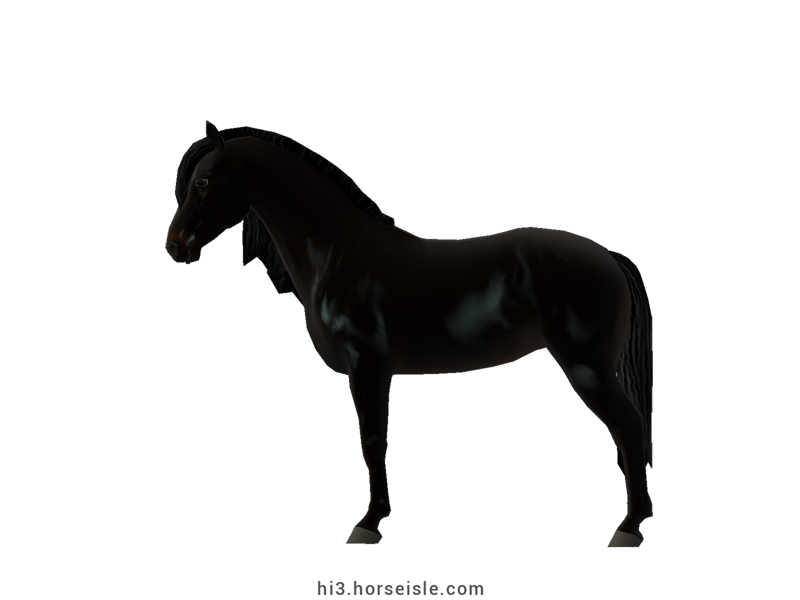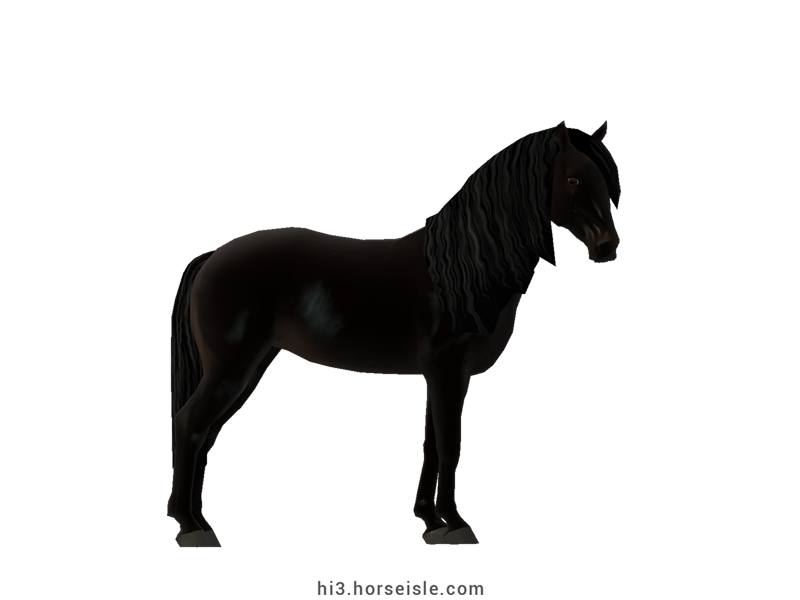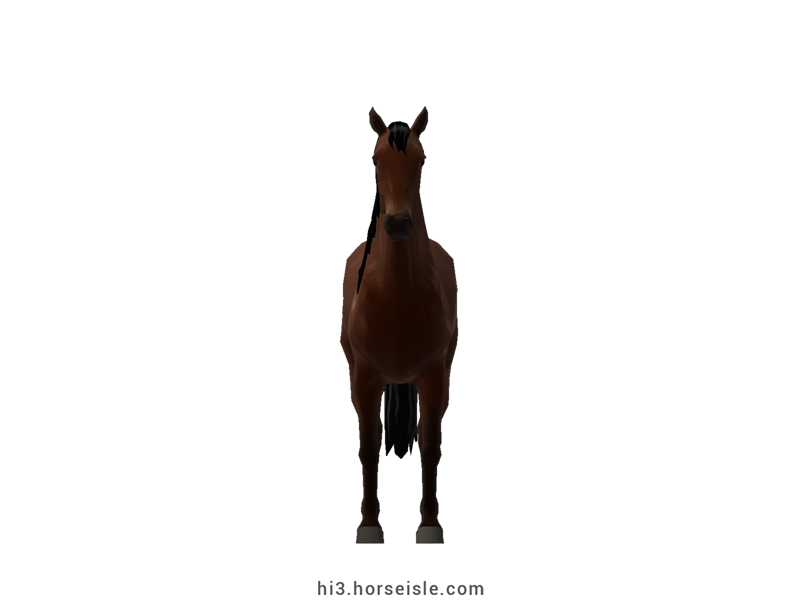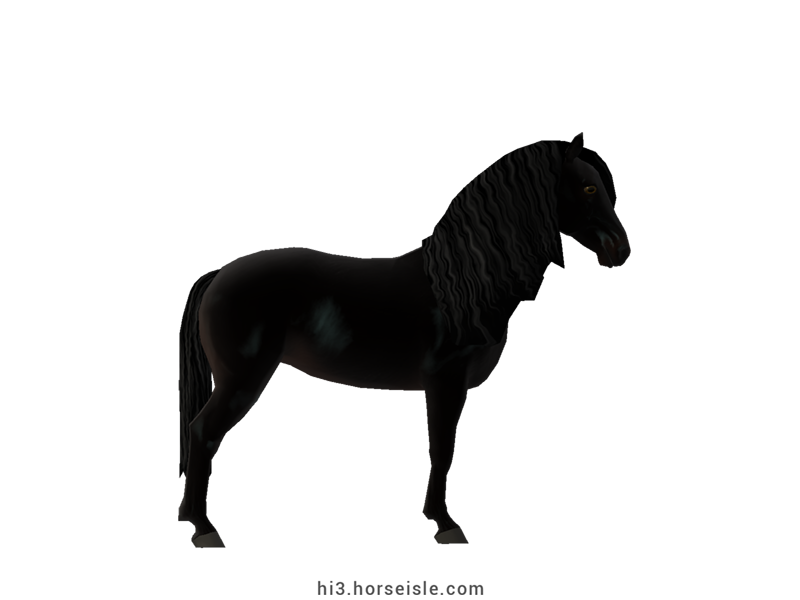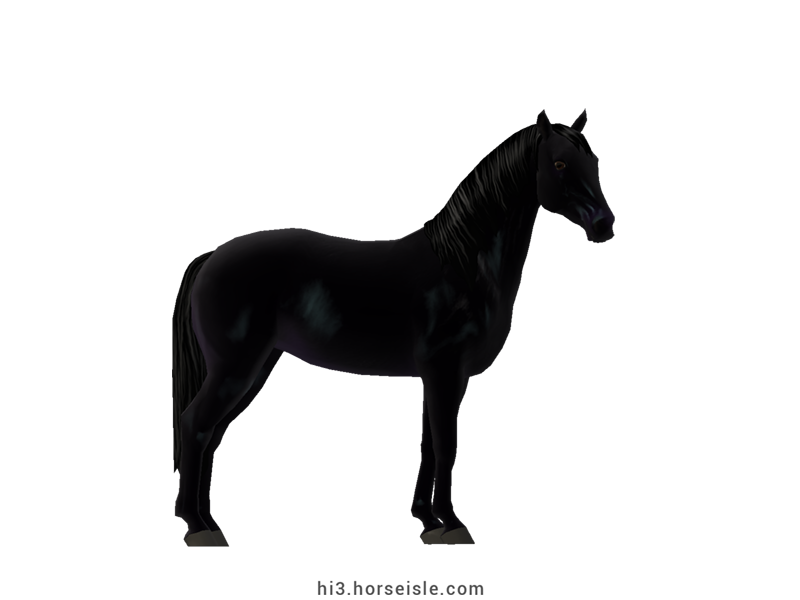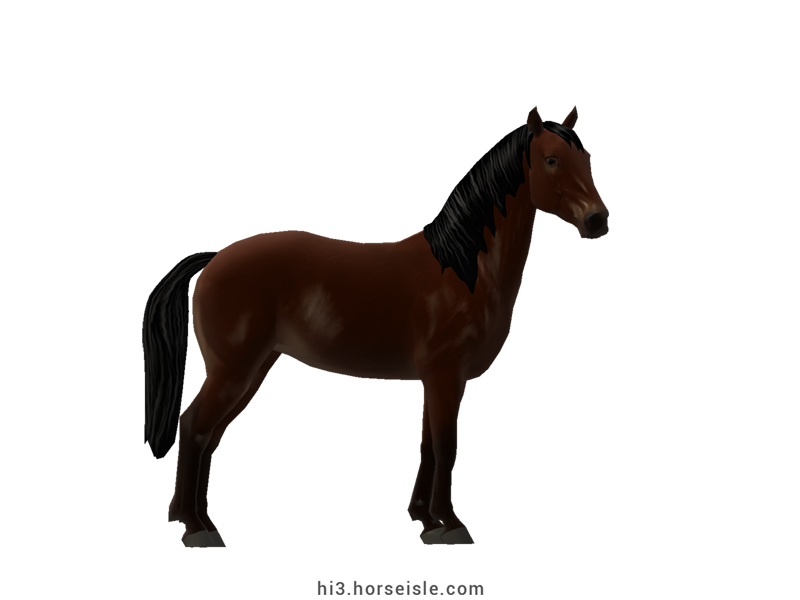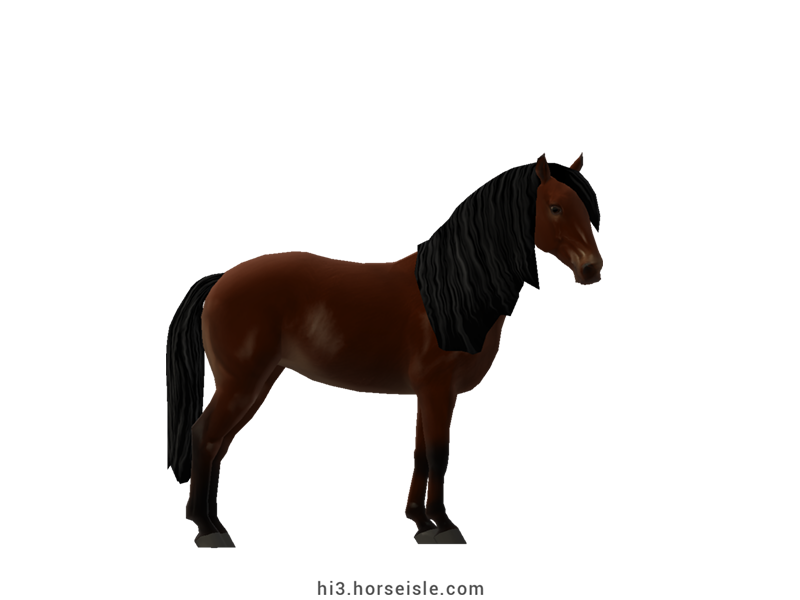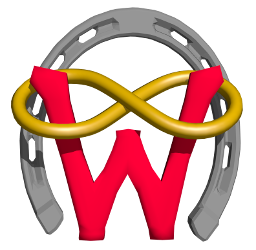Our Massive Real World Equine Reference!
[ INDEX ] Equine Type: Horse Breed: Arabo-Friesian [ PREV ] [ NEXT ]
The disappearance of the original Friesian:
Originally, Friesians were agile horses with a light trotting gait and decent stamina. That changed by the end of the 19th century, when Friesians were incorporated into farm work. Unfortunately, they proved to be too weak for this type of work, and therefore farmers decided to give up on their Friesians and to use heavier horses instead.
The lack of breeding of Friesian horses caused their population to dwindle to such an extent that by 1913 there were only three Friesians left. Several breeders from Friesland decided to save the breed by breeding their Friesians for muscle volume and strength.
While the resulting Friesians were indeed stronger, stockier, and fitter for farm work, all traits that increased their popularity, they also had smaller lung and heart volume compared to their ancestors, and therefore had less endurance.
The emergence of the Arabo-Friesian:
In the 1960s, the mechanization of agriculture left the now stockier Friesian redundant on the farms. Being a mediocre sport horse, the popularity of the Friesian quickly plummeted to a point where it faced extinction yet again.
One of the solutions which were proposed was to make the Friesian lighter and more suitable for sport competitions by crossing Friesians with Arabians. To this end, breeders crossed their Friesian mares with a black desert-bred Arabian stallion called Gharib. The resulting generations were crossed with Friesian horses until they had only between 6% to 25% Arabian blood.
The result was a new breed which resembled the Friesian but was lighter and more athletic. It quickly gained popularity and became known as "Arabo-Friesian".
It is worth noting that the Friesian in its pure form was saved as well, thanks to breeders who promoted the breed while breeding it to be lighter and more athletic (see 'Friesian' for more info).
The Arabo-Friesian today:
Today, the breeding of Arabo-Friesians revolves around their performance and appearance. As such, these horses need to look similar, or identical, to Friesian horses, have a lightness of movement, athletic action, and enough stamina to compete at the highest levels, especially in driving and dressage.
Breeding:
In order to achieve this combination of look and performance, Arabo-Friesians must have between 3% and 40% Arabian blood, and at least 55% Friesian blood. Horses can have the blood of other baroque breeds, or of other warmblood breeds (not more than 12.5%,) or of Thoroughbred (no more than 3.2%).
However, a ratio of 6% and 20% Arabian blood, with the rest being Friesian blood, is considered the ideal. Therefore, in Horse Isle, Arabo-Friesians must be crossed with Friesians or other Arabo-Friesians in order to maintain the purity of the breed.
Conformation:
Arabo-Friesians have a lighter conformation than Friesian horses, especially when it comes to their heads and necks. They also have less feathering to no feathering at all, and can have shorter manes.
That said, their general appearance is similar to that of the Friesians, which is not surprising given that Arabo-Friesians have at least 80% Friesian blood.
Performance metrics:
The following are the: range, average, (SD), and MOE of performance metrics of ordered Arabo-Friesians in Horse Isle (not bred ones). In rare cases,
Speed: 15.5-17.0, 16.3 (0.3), 0.07.
Sprint: 49-64, 56 (4), 0.69.
Accel: 0.84-1.08, 0.96 (0.05), 0.01.
Decel: 0.84-1.03, 0.92 (0.04), 0.01.
Jump: 5.03-5.31, 5.17 (0.07), 0.01.
Pull: 1.98-3.01, 2.54 (0.21), 0.04.
Turning: 47.91-61.72, 54.59 (3.57), 0.7.
Reverse: 2.5-3.1, 2.7 (0.2), 0.03.
Stamina: 44.18-51.07, 47.74 (1.41), 0.28.
Reaction: 0.72-0.83, 0.78 (0.02), 0.00.
Coats & Height:
Colors: Arabo-Friesians come mainly in black color, which is considered as the ideal color of the breed. However, they can also come in dark bay (termed 'brown' in Horse Isle).
Additionals: sooty.
Markings: white markings are to be avoided, as the aim is to get a horse with the same clean coat that is seen in Friesian horses.
Breeding notes: breeders should pick only Arabian stallions who have a black or a dark bay (brown) coat and who lack any white patterns/markings.
Height: 15hh to 17.1hh.
[ INDEX ] [ PREV ] [ NEXT ]

